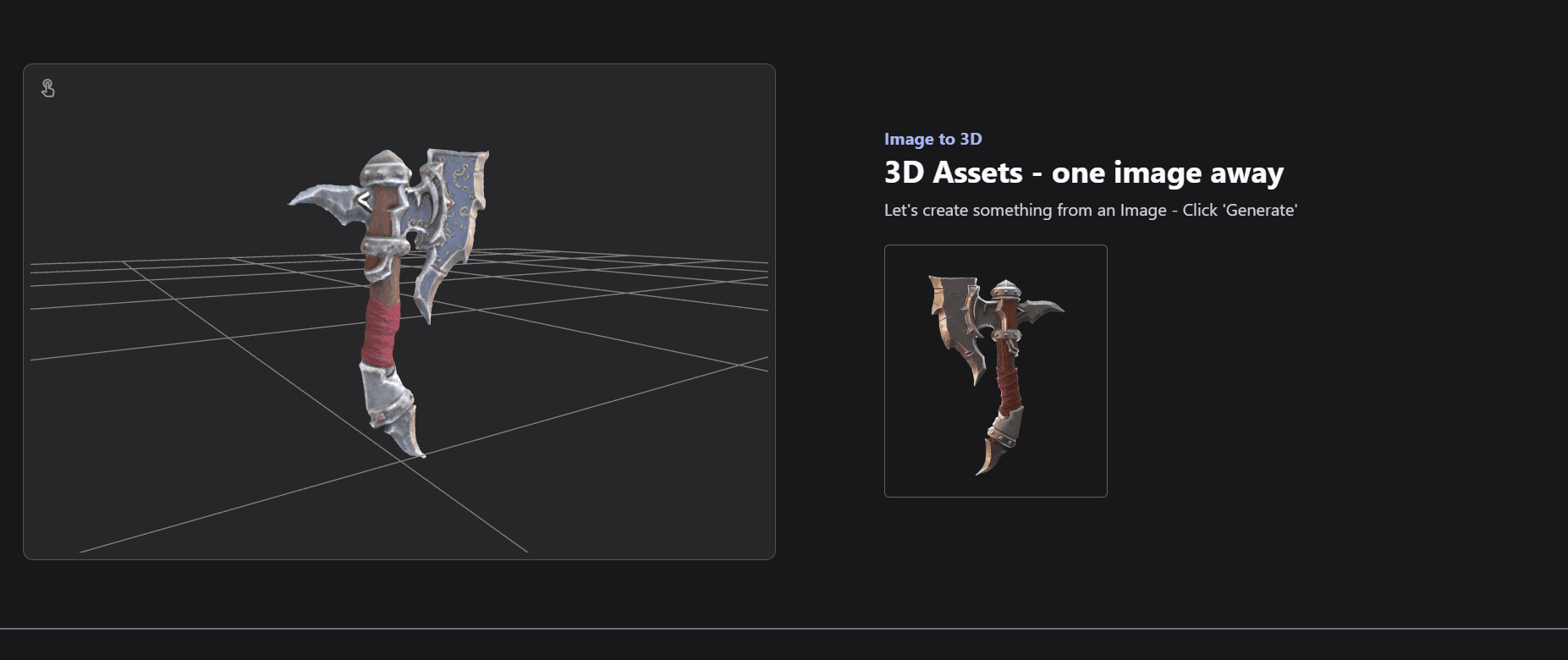How to Convert 2D Images to 3D Models Using AI?
Transforming 2D images into 3D models has never been easier, thanks to AI technology. In this guide, we'll walk you through the process of using 3D AI Studio to convert your 2D images into impressive 3D models. Whether you're a designer, game developer, or 3D printing enthusiast, this powerful tool can streamline your workflow and bring your ideas to life.
Step-by-Step Guide to Converting 2D Images to 3D Models
Step 1: Access the Image to 3D Tool
First, navigate to the 3D AI Studio Image to 3D tool. This intuitive platform is designed to make the conversion process as smooth as possible.
Step 2: Upload Your Image
Select an image you want to convert. For best results, choose an image that meets these criteria:
- Clear, front-facing view of the object
- Simple or plain background
- Single object in focus
- Good lighting and contrast
Once you've selected your image, upload it to the platform.

Step 3: Generate Your 3D Model
After uploading, simply click the "Generate" button. The AI will analyze your image and begin creating a 3D model based on it. This process usually takes a few minutes, depending on the complexity of the image.
Step 4: Explore and Refine Your 3D Model
Once generation is complete, you can examine your 3D model in the viewer. Here are some things you can do:
- Rotate the model to view it from all angles
- Toggle wireframe view to check the topology
- Adjust mesh settings if needed (e.g., reduce polygon count)
Take your time to ensure the model meets your expectations. If needed, you can always regenerate or make adjustments.
Step 5: Download Your 3D Model
Satisfied with your 3D model? It's time to download it. 3D AI Studio supports various file formats including .obj, .fbx, and .glb, ensuring compatibility with most 3D software and applications.
Tips for Optimal Results
- Image Quality Matters: The clearer and more detailed your input image, the better your 3D model will be.
- Experiment with Different Angles: If you're not satisfied with the result, try uploading images from different angles.
- Post-Processing: Remember, AI-generated models might need some touch-ups in 3D modeling software for perfect results.
Conclusion
Converting 2D images to 3D models using AI is a game-changer for many industries. With tools like 3D AI Studio, the process is becoming more accessible and efficient than ever before. Whether you're creating assets for games, preparing models for 3D printing, or visualizing product designs, this technology opens up a world of possibilities.
As AI continues to evolve, we can expect even more impressive capabilities in the future. For now, start experimenting with your own images and see how AI can transform your 2D ideas into 3D realities!
Remember, practice makes perfect. The more you use these AI tools, the better you'll become at preparing images and refining the results. Happy modeling!
Generate 3D models with AI
Easily generate custom 3d models in seconds. Try it now and see your creativity come to life effortlessly!